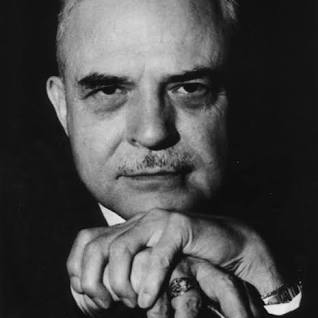
Milton Erickson developed an approach to hypnotherapy that challenged traditional techniques. An approach that focused on the uniqueness of each individual’s experience.
He believed in harnessing the power of the unconscious mind, you could facilitate powerful healing and personal transformation.
Erickson pioneered ‘indirect hypnosis’ utilizing metaphor, storytelling and trance inductions to help his clients access their inner resources and promote positive change.
His innovative methods paved the way for more modern and effective approaches to hypnotherapy.
Milton Erickson: Master of Language Patterns
Erickson’s use of language was a hallmark of his therapeutic style. He developed a keen understanding of linguistic patterns and utilized them strategically to bypass conscious resistance and engage the unconscious mind.
By employing embedded commands, ambiguous language, double binds and more, Erickson was able to communicate on multiple levels, ‘pacing’ the clients experience and leading them into a transformative ‘healing’ experience.
Milton Erickson frequently employed metaphors and stories to facilitate therapeutic change. He believed that the unconscious mind was more receptive to symbolic representations and could derive deep meaning from metaphoric narratives.
He would craft personalized stories that resonated with the client’s unique experiences, allowing them to gain insights, re-frame their challenges and find new perspectives.
What is Trance?
Trance can be described as a state of focused attention. Or as Milton put it:
“The loss of the multiplicity of the foci of attention.”
Trance is a state where the mind becomes highly receptive to suggestion. It is a natural phenomenon that occurs in our everyday lives, such as when we become engrossed in a book, daydream or lose track of time while engaging in an activity… Milton would intentionally and precisely utilize these spontaneous trance phenomena.
Understanding Trance as a Tool for Change
Milton Erickson understood that trance provided a gateway to the unconscious, and it was here that profound transformations and healing take place. He understood that inside trance, the conscious critical mind could be temporarily bypassed, allowing direct access to the deeper levels of the mind.
Erickson recognized the therapeutic potential of these trance states and skillfully utilized them to tap into the client’s unconscious mind, enabling clients to tap into their own inner resources, process emotions and effect lasting change.
Learn the most up to date skills and techniques in Hypnosis and Neuro-Linguistic Programming (NLP) to create fast and lasting positive change with your clients >> Find Out More <<
Inducing Trance
Milton Erickson had a keen ability to induce trance in his clients through a variety of methods. As well as hypnotic language patterns, Milton used rhythmic inductions, guided imagery and relaxation techniques and much more non-verbal methods to facilitate the transition into trance states.
By creating a safe and supportive environment, Erickson guided clients into a state of deep relaxation and heightened suggestibility.
Utilizing Spontaneous Trance Phenomena
Erickson was also skilled in recognizing and utilizing spontaneous trance phenomena that occurred naturally during therapy sessions.
He would observe the client’s nonverbal cues, such as changes in breathing patterns, eye movements or shifts in body posture, to identify when they were entering a trance state. He would then leverage these moments to deepen the therapeutic experience and guide the client towards their desired outcomes.
Tailoring Trance to the Individual
Milton recognized that different individuals have unique ways of accessing trance and responding to hypnotic suggestions. A hallmark of Erickson’s approach was his ability to customize the trance experience to each individual client.
Erickson tailored his induction techniques, language patterns and metaphors to resonate with the client’s specific experiences, beliefs and learning style. This personalized approach enhanced the effectiveness of the trance experience and maximized therapeutic outcomes.
Milton Erickson: Influence on Psychotherapy
Erickson’s influence extended far beyond the realm of hypnotherapy. His groundbreaking techniques had a profound impact on the field of psychotherapy as a whole.
His person-centered approach, emphasizing the strengths and resources of the individual, revolutionized the therapeutic relationship.
Neuro-Linguistic Programming
When Richard Bandler and John Grinder (co-founders of Neuro-Linguistic Programming – NLP) met with Milton Erickson it was a significant event in the history of change-work…
Modeling his techniques, language patterns, tonality and non-verbal cues etc, Bandler and Grinder were able to gain a deeper understanding of the principles behind Erickson’s success, inspiring many elements of NLP.
Milton Erickson: Legacy and Modern Applications

The legacy of Milton Erickson lives on through the teachings and writings of his students and followers.
His groundbreaking techniques continue to evolve and find applications in various therapeutic contexts.
Ericksonian hypnosis and his person-centered approach remain valuable tools for many therapists working with a diverse range of clients, including those with anxiety, trauma, phobias, and addictive behaviors.
Milton Erickson’s work continues to inspire practitioners to think creatively, embrace individuality and honor the power of the human mind.
Find Out about becoming a Licensed Hypnotic Practitioner Learn the Art & Science of Hypnosis for positive holistic change. Help people and get paid.


Pingback: Exploring the Work of the First Three Pioneers of Hypnosis
Pingback: Hypnosis and Antiquity: Unveiling the Ancient Roots of a Modern Practice
Pingback: Deeper Inside: The Art, Science and Power of Self Hypnosis for Self Mastery and Inner Peace